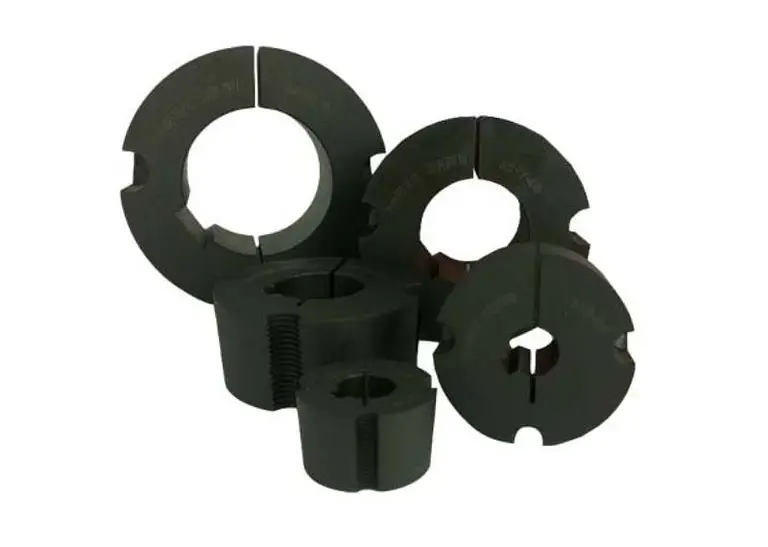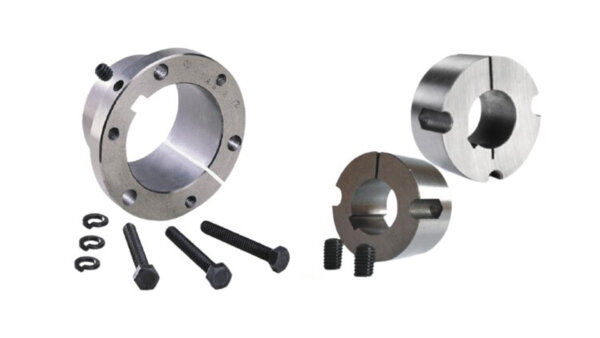
Can I find information on the compatibility of pulley bushings with various belt types?
Yes, you can find information on the compatibility of pulley bushings with various belt types. It is important to ensure that the pulley bushing and belt type are compatible to ensure proper functioning and longevity of the power transmission system. Here are some sources where you can find information on the compatibility of pulley bushings with different belt types:
- Belt Manufacturer’s Documentation: Belt manufacturers often provide documentation, catalogs, or technical guides that detail the recommended pulley bushing types and specifications for their specific belt products. These resources may outline factors such as belt width, tooth profile, tooth pitch, and recommended pulley bushing materials. Visiting the manufacturer’s website or contacting their customer support can provide valuable information on pulley bushing compatibility.
- Pulley Manufacturer’s Documentation: Pulley manufacturers or suppliers often provide information on the recommended belt types and corresponding pulley bushings for their pulley products. Documentation such as product catalogs, technical specifications, or installation guides may include details on compatible belt types and the required bushing specifications. Checking the manufacturer’s website or contacting their customer support can help you find information on pulley bushing compatibility.
- Engineering Handbooks and Manuals: Engineering handbooks and manuals related to power transmission systems may include information on the compatibility of pulley bushings with different belt types. These resources often cover topics such as belt drives, pulley systems, and bushing selection. Examples of engineering handbooks include the Mechanical Engineer’s Data Handbook and the Mechanical Engineer’s Reference Book. These resources can be found in libraries or as digital publications.
- Industry Associations and Organizations: Industry associations and organizations related to power transmission systems or specific industries may provide guidelines or recommendations on pulley bushing and belt compatibility. Examples include the Power Transmission Distributors Association (PTDA) or the Conveyor Equipment Manufacturers Association (CEMA). Visiting their websites or reaching out to these organizations can provide access to technical resources and industry standards.
- Online Forums and Communities: Online forums and communities dedicated to mechanical engineering, industrial applications, or power transmission systems can be valuable sources of information. Engaging with professionals and enthusiasts in these communities can allow you to seek advice and knowledge-sharing regarding pulley bushing and belt compatibility. Members with experience in similar applications may share their insights and recommendations.
When seeking information on the compatibility of pulley bushings with various belt types, it is important to consider the specific requirements of your application, such as belt width, tooth profile, speed, and load capacity. Consulting reliable sources such as belt and pulley manufacturers, engineering handbooks, industry associations, and online communities will help you find the necessary information to ensure compatibility and optimal performance of the pulley bushings with the chosen belt type.

What are the temperature limits of pulley bushings, and how does it affect their performance?
The temperature limits of pulley bushings depend on various factors, including the materials used in their construction and the specific application requirements. Pulley bushings are typically designed to operate within certain temperature ranges to ensure their performance, durability, and longevity. Here’s an overview of the temperature limits and how they can affect the performance of pulley bushings:
- Material Compatibility: Different materials used in pulley bushings have varying temperature limits. Common bushing materials include metal alloys, plastics, and composite materials. Each material has its own thermal properties and can withstand different temperature ranges. It is important to consult the manufacturer’s documentation or specifications to determine the temperature limits of specific bushing materials.
- High-Temperature Performance: When pulley bushings are exposed to high temperatures beyond their recommended limits, it can lead to various performance issues. For instance, excessive heat can cause the bushing material to soften, deform, or lose its structural integrity. This can result in increased friction, accelerated wear, and reduced load-carrying capacity. Additionally, high temperatures can affect the lubrication properties of the bushing, causing lubricants to break down or evaporate more quickly, leading to inadequate lubrication and increased friction.
- Low-Temperature Performance: Similarly, extremely low temperatures can also impact the performance of pulley bushings. Some materials used in bushings may become brittle or less flexible in cold environments, which can increase the risk of cracking or failure under load. Cold temperatures can also affect the lubricant properties, causing it to thicken or become less effective in reducing friction. It is important to consider the minimum temperature limits of bushing materials to ensure their suitability for specific cold-temperature applications.
- Thermal Expansion: Temperature changes can cause materials to expand or contract. This phenomenon, known as thermal expansion, can affect the dimensional stability of pulley bushings. If the bushing material and the mating components have different coefficients of thermal expansion, significant temperature variations can lead to misalignment or interference between the bushing and the shaft. This can result in increased friction, wear, and potential damage to the bushing or the pulley system.
- Application Considerations: The temperature limits of pulley bushings should be considered in the context of the specific application requirements. Factors such as the operating environment, the presence of heat sources or cooling mechanisms, and the duration of exposure to extreme temperatures should be taken into account. In some cases, additional cooling measures or insulation may be necessary to protect the bushings and ensure optimal performance.
It is important to note that the temperature limits provided by bushing manufacturers are general guidelines, and the actual performance may vary depending on the specific conditions and application parameters. Consulting the manufacturer’s documentation, technical specifications, or contacting their customer support can provide more accurate information on the temperature limits and their impact on the performance of pulley bushings.

Can I get recommendations for pulley bushings with high wear resistance?
If you are looking for pulley bushings with high wear resistance, there are several materials that are known for their excellent wear properties. Here are some recommendations:
1. Bronze Bushings:
– Bronze bushings, particularly those made from materials such as phosphor bronze or aluminum bronze, are known for their exceptional wear resistance. They have good load-bearing capabilities and are suitable for various applications, including pulley systems.
– Bronze bushings are self-lubricating, which helps reduce friction and wear. They are commonly used in heavy-duty applications where high wear resistance is required, such as in mining, construction, and industrial machinery.
2. Composite Bushings:
– Composite bushings, also known as polymer bushings, are another option for high wear resistance. They are typically made from materials such as PTFE (polytetrafluoroethylene) or other reinforced polymers.
– Composite bushings offer low friction and excellent wear characteristics. They are self-lubricating, reducing the need for additional lubrication in the pulley system. These bushings are commonly used in applications where resistance to wear, chemicals, and moisture is essential.
3. Ceramic Bushings:
– Ceramic bushings are known for their exceptional wear and corrosion resistance. They are made from materials such as silicon nitride or zirconia.
– Ceramic bushings have high hardness, low friction, and excellent dimensional stability. They are often used in demanding applications where wear resistance is critical, such as high-speed or high-temperature pulley systems.
4. Steel or Stainless Steel Bushings:
– Steel or stainless steel bushings can also offer good wear resistance, especially when combined with proper lubrication. They are commonly used in applications where high strength and durability are required.
– These bushings can be beneficial in pulley systems that operate in harsh environments, where resistance to corrosion, abrasion, and fatigue is crucial.
5. Consult with Experts:
– It is recommended to consult with experts, such as pulley manufacturers, suppliers, or engineers, who have experience in selecting bushings with high wear resistance.
– They can provide guidance and specific recommendations based on your application requirements, considering factors such as load capacity, operating conditions, and environmental factors.
When selecting pulley bushings with high wear resistance, consider the specific needs and demands of your application. Factors such as load capacity, operating speeds, temperature range, and environmental conditions should be taken into account. By choosing the appropriate materials and seeking expert advice, you can ensure that the pulley bushings provide optimal wear resistance and contribute to the longevity and performance of your pulley system.


editor by CX 2024-05-09